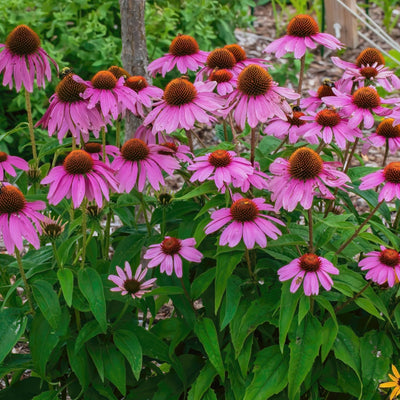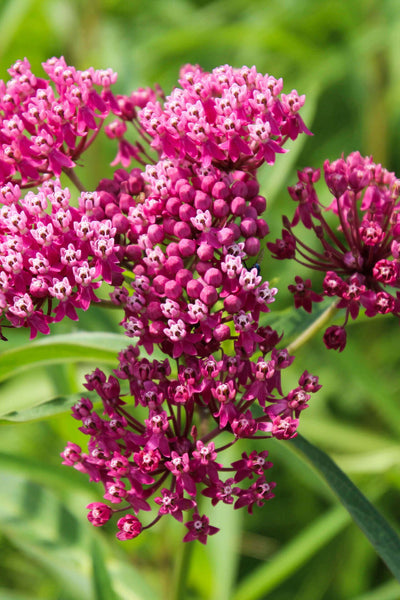Wildflower Gardens: A Gift from Nature Directly in Your Yard
Native and wildflowers are magnificent and wildflowers are equally incredible which greet the landscapes of meadows and valleys and remain in the middle of the mountains and rough nature. Their beauty almost steals the scene in these settings proving the creativity of the Almighty in nature. These flowers have a way of taking the attention of people by adding color, beautiful aroma, and life to the surroundings.
For all wild flower lovers, if you want to have that beautiful part of your home garden, then wildflowers would suit best. Aside from their beauty, these flowers have a lot of benefits in addition to helping pollinate and consequently attracting bees, butterflies, and singing birds to the garden. Even better is that wildflowers grow in almost any garden with almost no care needed in addition to being beautiful, helping the local ecosystem, and easy to grow.
Why Grow Wildflowers in Your Garden?
Homeowners love wildflower gardens and for good reason! Unlike the typical, trimmed gardens, wildflower gardens are easier to maintain and look more natural. Wildflowers are also more likely to grow in your area because they are suited to your region’s soil and weather. They also take care of themselves (just needing water and the occasional weed pulled) since they are pest resistant. We get the added benefit of being able to enjoy their beauty the entire year! They also play a big role in the ecosystem because they help restore local wildlife.
Wildflower gardens are not only beautiful, but they also promote positive changes in the surrounding environment by encouraging the growth of bees, butterflies, and other important pollinators. By welcoming nature, you are helping the environment in many other ways, beyond just growing flowers.
How to Start Your Wildflower Garden
Creating a wildflower garden whether you have a large garden, or just a small little corner, is very easy and straightforward. Below are the simple and easy steps to design your very own wildflower garden.
Step 1: Selecting the Best Site
You should look for a dry, well-drained, and sunny area with six or more hours of sunlight every day. If you have a sunny area in the garden, this would be an optimal spot to plant the flowers. Do not plant the flowers in an area that retains a lot of water, as stagnant water can rot the seeds and negatively affect the growth of the plants.
Step 2: Customize the Soil
The soil should not be very fertile, as the flowers do well in dry soil, and weeds, grass, or other plants in the area should be eliminated. Waging war with these aggressive plants is vital as they will soak up the nutrients and water before the flowers get to them.
Step 3: Picking the Suitable Wildflower Seeds
You can visit garden centers to buy packets or pouches of seeds. It does not have to be very complicated as you can find many local seeds that grow well in your area. Here are a few popular ones:
- Black-Eyed Susan - It has a striking appearance with a combination of yellow petals that surround a black center. More than just an eye-catcher, daylilies have the ability to survive drought like a champ and are great for attracting pollinators.
- Purple Coneflower - This perennial is an essential native plant garden flower, attracting two major pollinators: bees and butterflies.
- Milkweed - Not only is this flower stunning, but it's a crucial resource for the beloved monarch butterflies. The other wildflower species you may select should be harmonious in terms of color, height, and growth patterns.
Step 4: Planting Wildflowers
Once you have the packets, open them and follow their instructions. Depending on your zone, wildflowers can be seeded in early spring, or in the late fall. In most regions, fall planting is preferable since seeds lie in a dormant state. They can naturally undergo a cold spell, which helps their germination.
In the spring, seeds need to be either soaked in water or scarified. This helps to break dormancy and initiates the process of germination. Soaking them overnight in water is the optimum method, but gently scratching the surface of the seed is also an option.
Step 5: Watering and Maintenance
Once established, wildflowers are fairly drought tolerant. However, they require a lot of water in the early stages of growth. After seeds have been planted, the soil should be damp until the seeds germinate. Ensure competition for water, nutrients, and space is optimum by eliminating weeds and unnecessary plants.
Once established, wildflowers can be drought tolerant. In most cases, they need only the natural rainfall of their region. However, they also need watering during periods which tend to be dryer.
Wildflowers to Include in Your Garden
In addition to black-eyed Susans, milkweed, and purple coneflowers which add appeal to any garden, here are other wildflowers to consider adding that will surely brighten your yard:
- Lupine- Distinctive for its tall blue, pink, or purple spires that gleam in the sun, lupine will invite the dance of many bees and fluttering butterflies.
- Indian Paintbrush- Add a burst of pizzazz to your yard with a flower that blooms with vivid red and orange.
- Bee Balm- A wildflower that breathes lovely aromas into the garden and bright floral beacons that draw in bees and hummingbirds.
Conclusion
The TN Nursery offers an assortment of wildflower and native species to help cultivate your home’s garden, and simultaneously provide help to the surrounding environment.
FAQs
What are the cons of a wildflower garden?
Like any other thing, a wildflower garden also has its share of disadvantages. The biggest ones are rampant growth of wildflowers, which if unchecked can become invasive, the absence of a manicured garden look, a potential magnet for pests that can harm other plants in the garden. It is also true that wildflower gardens are low maintenance and offer pollinators a place to rest.
Can wildflower seeds be sown freely into my garden?
It is possible to toss wildflower seeds into a garden. However, in order to achieve best results, some prior measures should be taken. First, make sure to clear all unwanted plants and any other rubbish in order to prepare the land. After this, the seeds should be cast evenly and subsequently pressed gently into the contact soil. For the best results, they should be seeped in water and the soil should be kept wet during the growing process. A person is fully capable of tossing the seeds, though, what would achieve a greater chance of success would be the aforementioned strategy.
How do I start a wildflower garden?
A wildflower garden is very easy to start. Head to your garden and find a very sunny spot that has good, loose, well-drained soil. Clear any existing weeds, and then actively work to loosen the soil. After that, go to your local store and buy some wildflower seeds. Make sure to get seeds that will thrive in your area, and follow the instructions on the packets. Water the seeds, and eliminate any weeds. After some time with little care, your wildflower garden will be bright and colorful!
What month should you plant wildflowers?
Wildflower planting is one that will depend on the area you are in. For the most part, planting wildflower seeds in the first part of spring and in fall works best. If you live in a more cold area, fall planting is good because for some time the seeds will be cold, making for good, easy germination. On the other hand, people who live in very warm areas should plant in the spring. Make sure to check your local area and find the USDA Hardiness Zone to find the best time to plant.
What is the 3-year rule in gardening?
The 3-year rule states that it will take 3 years for gardening species to come to full bloom. This rule is most often referred to when gardening with wildflowers or other types of perennials. During the first 3 years you will notice little to no changes with the plants, after this period you are expected to notice an increase in plant growth and blooms. When it comes to gardening, one of the most important virtues to have is patience. Plants do take a long period of time to adjust to certain situations.




